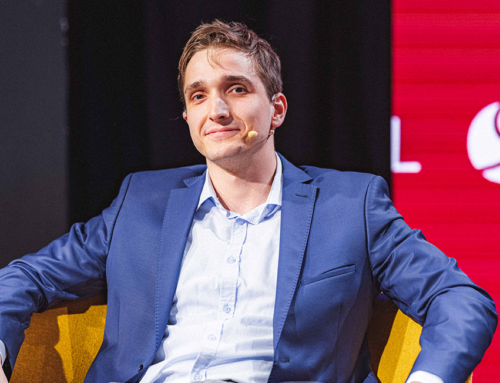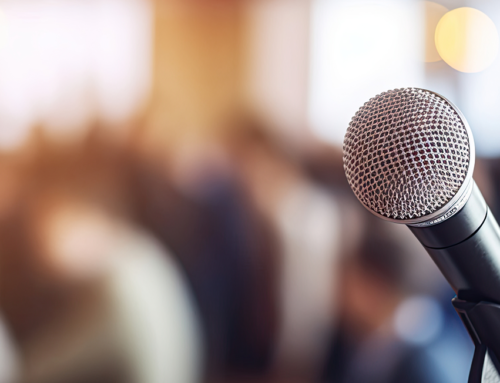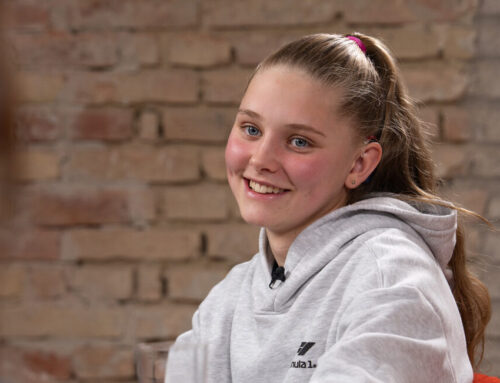Unilaterally deaf professor supervises further development for hearing systems
While university professor Dr.Florian Eibensteiner was suffering from unilateral deafness which resulted from mumps disease, one of his former students was developing better connection options for CI audio processors. Together, they started thinking about potential for further improvement.

As part of the TIMed CENTER in Hagenberg, Austria, scientists are conducting research in various medical technology fields. This is also the case with Prof. Florian Eibensteiner, who has been teaching in the Hardware Software Design course at FH Campus Hagenberg since 2017. He is experimenting with so-called „smart textiles“, such as pressure sensors in shoes to analyze foot malpositions.
A sound wave is also about pressure, or more precisely, about oscillations of air pressure. However, hearing only became a point of interest for the scientist when the virus caught him in 2019. Goat mumps is characterized by swallowing and chewing difficulties. Possible complications include hearing loss, which is in most cases sudden, unilateral deafness which can sometimes remain permanently.
An effect of single sided deafness
Eigebnsteiner completely lost his hearing in left ear within 3 days after the first symptom, despite the therapy. „At first, I thought I could hear everything on the right side anyway.“ But, when the professor left the protective atmosphere of the clinic and his home, he became aware of his handicap, especially in the lecture hall or when talking to students.
„For example, it was really difficult at the restaurant. People are murmuring all around and dishes are clattering from the kitchen. With that level of noise, it is difficult to locate where the sound is coming from. I understood people on the right better than my conversation partner on the left. It became really exhausting to follow the conversation.“
Hearing on both sides thanks to CI
1 in 1000 newborns are born with unilateral hearing impairment and 3 to 6 percent of all children have hearing impairment at school age. More children are affected as they grow older. When it is no longer possible to understand speech in one ear, even with hearing aids, we talk about single-sided deafness or SSD.
When a person loses hearing in one ear, his/her quality of life is also affected. Social gatherings and work meetings become exhausting, whereas locating the sound becomes difficult. Sometimes, noisy environments can even trigger anxiety.
„I soon noticed how tired I was getting every day. That´s how exhausting hearing was for me.“ Eibensteiner was right to worry: „Due to a constant stress while listening, there was a risk that I could also develop hearing loss on the healthy side or get tinnitus.“ At the Kepler University hospital in Linz, he got an advice to get a Cochlear Implant. „I decided to try it out, as it could only get better.“ After three months of deafness, he received a CI.
Streaming with CI
„I wanted to gain some experience before starting my master´s degree, which is why I applied for a job at MED-EL,“ says Markus Jellitsch. He earned a bachelor´s degree in Hardware-Software-Design at the University of Applied Sciences in Hagenberg in 2017. The knowledge he needed in the field was passed on to him by Prof. Florian Eibensteiner. He then had the chance to put this knowledge directly into practice at MED-EL. „In the first two years, I was primarily involved in completing the AudioStream and then worked on integrating Bluetooth into the SONNET 2.“
Markus remained in contact with his former colleagues and FH Hagenberg where he studied. One day, he received a call from his former professor Eibensteiner, who was considering cochlear implantation as a solution for his unilateral deafness and had many open questions about the implants and processor options. „By the time I took educational leave from MED-EL a little later and started my master´s degree, Prof.Eibensteiner was already on hearing rehab. Then in the second semester, he was teaching me again.“
Hearing rehabilitation with one-sided streaming
Florian Eibensteiner vividly remembers the day his CI was activated for the first time: „It was a roller coaster of emotions. That joy of hearing again! And the realization: I can hear, but I don´t understand anything.“ Unilaterally deaf CI candidates should be prepared for a longer phase of adaptation to hearing and regular practice, as the hearing ear on the other side reduces the training effect. „But my speech therapist Sabrina Ackerl helped me a lot with that. You have to give it time.“
Eibeinsteiner began his training with simple exercises, such as conscious listening to the water tap. But soon he tried something else: „I am interested in technology, so I tried streaming right after activation. And after a few days, I understood the first snippets of text.“
For specific auditory training of one side, users who can still hear well on the other side can stream sound directly into the audio processor, via audio cable, FM system or bluetooth streaming. „For me, streaming is the alpha and omega of auditory training for this purpose,“ explains the IT specialist. „That way I can practice while walking or in the car. Without audio streaming, I certainly wouldn´t have reached the same level of listening comprehension today.“
The challenge of listening on both sides while streaming
„In my first two years at MED-EL, I implemented what I have learned from Prof.Eibensteiner into a product. And today, he is using what I had developed. And he kept coming up with ideas on what might be improved.“ Since this CI user hears normally in the other ear, he would like to see further improvements in streaming. „For me, a following possibility would be interesting: to hear on a healthy ear via headphones and on the other ear via CI – with the same hearing impression on both sides.“
As a result, this professor and student frequently discussed strengths and weaknesses of Bluetooth. „One problem with ASHA[1] is the left-right bias: the signal arrives earlier on the left than on the right side. This can lead to echo sensations or lateralization effects,“ Jellitsch explains. „The ASHA standard by itself does not include left-right standardization. That means the two hearing aids must ensre that the stream is played simultaneously“. In his master thesis, supervised by Prof.Eibensteiner, Jellitsch investigated this problem in more detail.
The right decision
„This wasn´t an easy option for me. After all, it is a surgery on the head.“ That´s why the exchange with the other CI users was important to Eibensteiner not only during the phase of decision making, but also right after the implantation. „The opportunity to share with others enriched me and helped me a lot. That´s why I want to continue sharing my experience with the others.“
During auditory training, he was also helped by his sound memory before deafness. „It´s like learning new vocabulary: instead of looking at the list, you can look inside to see if what you hear is right. Because I knew how words are supposed to sound. And I always used the support of the hearing side.“
For Florian Eibensteiner, cochlear implantation was the right decision. „Even though there are still difficult hearing situations and my hearing is still not quite like natural hearing, the CI is a great relief.“ Then he adds with a smile: „Maybe Markus has come up with something new in his master´s thesis that I might use in the future.“
[1] ASHA is a standard for streaming from the cell phone to the hearing device.






